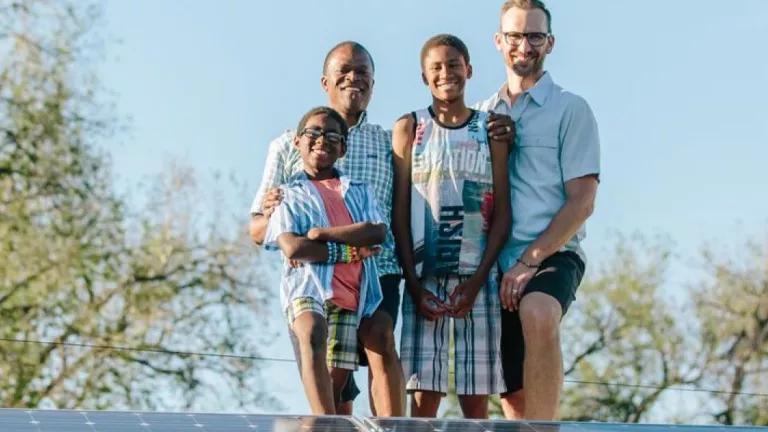Equitable Greenhouse Gas Reduction: Webinar Series and Strategy Guides
To facilitate equitable implementation of EPA’s Greenhouse Gas Reduction Fund, NRDC is co-producing a series of sector-specific strategy guides and webinars

Shutterstock
This post was written by Sam Lee, who is a Summer Schneider Fellow in NRDC's Green Finance Center. Sam holds a Master of Arts in Sustainability Science and Practice from Stanford University and will be focused on the implementation of EPA's Greenhouse Gas Reduction Fund while at NRDC.
On June 22, NRDC and the Center for Impact Finance at University of New Hampshire (UNH) partnered to launch the Equitable Greenhouse Gas Reduction Webinar Series and Equitable Strategy Guides. The 7-week series draws a roadmap for how EPA’s Greenhouse Gas Reduction Fund (GGRF) can deliver equitable greenhouse gas reduction in communities thus far overlooked by clean energy financing, especially BIPOC (Black, Indigenous, and people of color) and/or low-income communities.
Sector by sector, we will explore strategies for community development financial institutions (CDFIs), Green Banks, community development credit unions, Minority Depository Institutions, and other mission lenders to ensure that the benefits of the clean energy revolution under the GGRF are accessible to all.
This past week, the series opened with an overview discussion of the fundamentals that are essential for rapid, impactful, and equitable deployment of the Greenhouse Gas Reduction Fund. The conversation was driven by moderator Sarah Dougherty, Director of NRDC’s Green Finance Center, and panelists:
Damon Burns, CEO of Finance New Orleans
Sylvia Chi, Senior Policy Analyst at Just Solutions Collective
Abby Corso, Chief Strategy Officer at Elevate Energy
Cathie Mahon, CEO of Inclusiv
Panelists highlighted the unique opportunity presented by the GGRF’s flexibility and explicit investment allocations in low-income and disadvantaged communities (LI/DACs). They also cautioned that place-based investing is not enough, and strong policy guardrails and governance provisions will be necessary to ensure that the benefits of clean energy projects reach host communities. Taking advantage of the GGRF in LI/DACs will require development of an entire ecosystem to support project origination, technical implementation, and clear, accessible packaging of the financial incentives. Panelists identified ongoing community dialogue and trust-building as critical to the success of these elements and stressed the power of starting early in making connections to community-based partners.
NRDC and UNH have also joined to produce 6 working-paper Equitable Strategy Guides addressing how to: (1) integrate and normalize greenhouse gas reduction into development services, financing, and asset management, and (2) deploy GGRF dollars to scale clean energy financing in LI/DACs and maximize community benefits, such as economic development, quality jobs, resilience, affordable housing, and sustainable food systems.
The upcoming webinars are based on these working strategy guides and each cover a different market, starting with small residential and proceeding with multifamily residential, community solar, commercial real estate and community facilities, electric vehicles (EVs), and small businesses. The series will continue to broaden the conversation around the GGRF through the perspectives of experienced lenders, community-based organizations and policy advocates, and key industry players including developers, installers, and technical advisors.
As organizations prepare to apply to EPA’s Notices of Funding Opportunities (NOFOs) for the GGRF, these resources can serve stakeholders across the ecosystem in designing their strategies for equitable greenhouse gas reduction. Register now to join us in the next webinar and download the strategy guides here.




